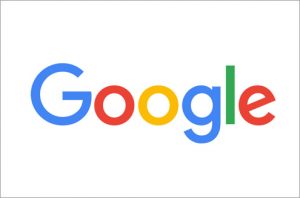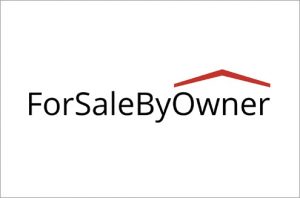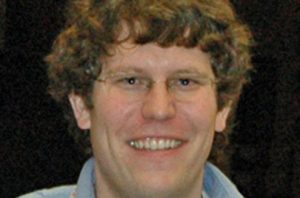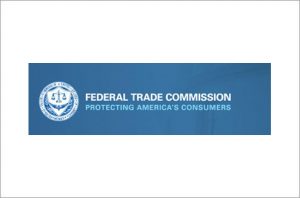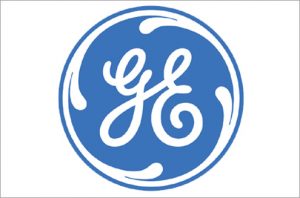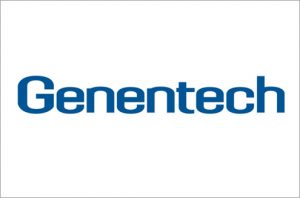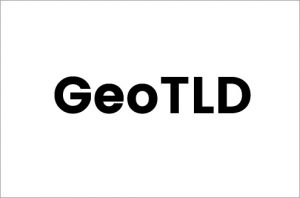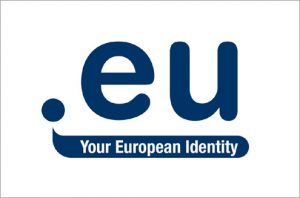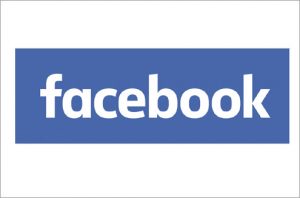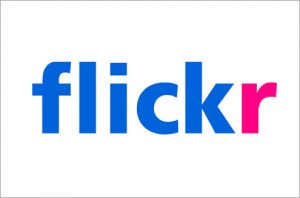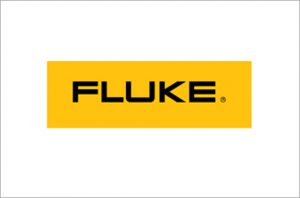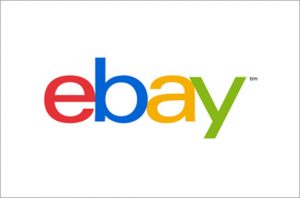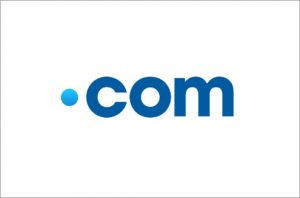Facebook is an American for-profit corporation and online social media and social networking service based in Menlo Park, California, United States. The Facebook website was launched on February 4, 2004, by Mark Zuckerberg, along with fellow Harvard College students and roommates, Eduardo Saverin, Andrew McCollum, Dustin Moskovitz, and Chris Hughes. The founders had initially limited the website’s membership to Harvard students; however, later they expanded it to higher education institutions in the Boston area, the Ivy League schools, and Stanford University. Facebook gradually added support for students at various other universities, and eventually to high school students as well. Since 2006, anyone age 13 and older has been allowed to become a registered user of Facebook, though variations exist in the minimum age requirement, depending on applicable local laws. The Facebook name comes from the face book directories often given to United States university students.
Facebook may be accessed by a large range of desktops, laptops, tablet computers, and smartphones over the Internet and mobile networks. After registering to use the site, users can create a user profile indicating their name, occupation, schools attended and so on. Users can add other users as “friends”, exchange messages, post status updates and digital photos, share digital videos and links, use various software applications (“apps”), and receive notifications when others update their profiles or make posts. Additionally, users may join common-interest user groups organized by workplace, school, hobbies or other topics, and categorize their friends into lists such as “People From Work” or “Close Friends”. In groups, editors can pin posts to top. Additionally, users can complain about or block unpleasant people. Because of the large volume of data that users submit to the service, Facebook has come under scrutiny for its privacy policies. Facebook makes most of its revenue from advertisements which appear onscreen. Facebook, Inc. held its initial public offering (IPO) in February 2012, and began selling stock to the public three months later, reaching an original peak market capitalization of $104 billion. On July 13, 2015, Facebook became the fastest company in the Standard & Poor’s 500 Index to reach a market cap of $250 billion. Facebook has more than 1.65 billion monthly active users as of March 31, 2016. As of April 2016, Facebook was the most popular social networking site in the world, based on the number of active user accounts. Facebook deems users from the ages of 13 to 18 as being a minor and therefore, sets their profiles to share its content with friends only.
2003–06: Thefacebook, Thiel investment, and name change
Zuckerberg wrote a program called “Facemash” on October 28, 2003 while attending Harvard University as a sophomore (second year student). According to The Harvard Crimson, the site was comparable to Hot or Not and used “photos compiled from the online facebooks of nine houses, placing two next to each other at a time and asking users to choose the ‘hotter’ person”. To accomplish this, Zuckerberg hacked into protected areas of Harvard’s computer network and copied private dormitory ID images. Harvard did not have a student “face book” (a directory with photos and basic information) at the time, although individual houses had been issuing their own paper facebooks since the mid-1980s, and Harvard’s longtime Freshman Yearbook was colloquially referred to as the “Freshman Facebook”. Facemash attracted 450 visitors and 22,000 photo-views in its first four hours online. The site was quickly forwarded to several campus group list-servers, but was shut down a few days later by the Harvard administration. Zuckerberg faced expulsion and was charged by the administration with breach of security, violating copyrights, and violating individual privacy. Ultimately, the charges were dropped. Zuckerberg expanded on this initial project that semester by creating a social study tool ahead of an art history final exam. He uploaded 500 Augustan images to a website, each of which was featured with a corresponding comments section. He shared the site with his classmates, and people started sharing notes. The following semester, Zuckerberg began writing code for a new website in January 2004. He said that he was inspired by an editorial about the Facemash incident in The Harvard Crimson. On February 4, 2004, Zuckerberg launched “Thefacebook”, originally located at thefacebook.com.
Six days after the site launched, Harvard seniors Cameron Winklevoss, Tyler Winklevoss, and Divya Narendra accused Zuckerberg of intentionally misleading them into believing that he would help them build a social network called HarvardConnection.com. They claimed that he was instead using their ideas to build a competing product. The three complained to The Harvard Crimson and the newspaper began an investigation. They later filed a lawsuit against Zuckerberg, subsequently settling in 2008 for 1.2 million shares (worth $300 million at Facebook’s IPO). Membership was initially restricted to students of Harvard College; within the first month, more than half the undergraduates at Harvard were registered on the service. Eduardo Saverin (business aspects), Dustin Moskovitz (programmer), Andrew McCollum (graphic artist), and Chris Hughes joined Zuckerberg to help promote the website. In March 2004, Facebook expanded to the universities of Columbia, Stanford, and Yale. It later opened to all Ivy League colleges, Boston University, New York University, MIT, and gradually most universities in the United States and Canada.
In mid-2004, entrepreneur Sean Parker—an informal advisor to Zuckerberg—became the company’s president. In June 2004, Facebook moved its operations base to Palo Alto, California. It received its first investment later that month from PayPal co-founder Peter Thiel. In 2005, the company dropped “the” from its name after purchasing the domain name facebook.com for US$200,000. The domain facebook.com belonged to AboutFace Corporation before the purchase. This website last appeared on April 8, 2005; from April 10, 2005 to August 4, 2005, this domain gave a 403 error.
In May 2005, Accel Partners invested $12.7 million in Facebook, and Jim Breyer added $1 million of his own money. A high-school version of the site was launched in September 2005, which Zuckerberg called the next logical step. (At the time, high-school networks required an invitation to join.) Facebook also expanded membership eligibility to employees of several companies, including Apple Inc. and Microsoft.
2006–2012: public access, Microsoft alliance and rapid growth
On September 26, 2006, Facebook was opened to everyone at least 13 years old with a valid email address.
In late 2007, Facebook had 100,000 business pages (pages which allowed companies to promote themselves and attract customers). These started as group pages, but a new concept called company pages was planned. Pages began rolling out for businesses in May 2009.
On October 24, 2007, Microsoft announced that it had purchased a 1.6% share of Facebook for $240 million, giving Facebook a total implied value of around $15 billion. Microsoft’s purchase included rights to place international advertisements on the social networking site.
In October 2008, Facebook announced that it would set up its international headquarters in Dublin, Ireland. Almost a year later, in September 2009, Facebook said that it had turned cash-flow positive for the first time.
A January 2009 Compete.com study ranked Facebook the most used social networking service by worldwide monthly active users. Entertainment Weekly included the site on its end-of-the-decade “best-of” list saying, “How on earth did we stalk our exes, remember our co-workers’ birthdays, bug our friends, and play a rousing game of Scrabulous before Facebook?” Traffic to Facebook increased steadily after 2009. The company announced 500 million users in July 2010[50] making it the largest online social network in the world at the time. According to the company’s data, half of the site’s membership use Facebook daily, for an average of 34 minutes, while 150 million users access the site by mobile. A company representative called the milestone a “quiet revolution.”
In November 2010, based on SecondMarket Inc. (an exchange for privately held companies’ shares), Facebook’s value was $41 billion. The company had slightly surpassed eBay to become the third largest American web company after Google and Amazon.com.
In early 2011, Facebook announced plans to move its headquarters to the former Sun Microsystems campus in Menlo Park, California. In March 2011, it was reported that Facebook was removing approximately 20,000 profiles offline every day for violations such as spam, graphic content, and underage use, as part of its efforts to boost cyber security. Release of statistics by DoubleClick showed that Facebook reached one trillion page views in the month of June 2011, making it the most visited website tracked by DoubleClick. According to a Nielsen Media Research study, released in December 2011, Facebook had become the second-most accessed website in the U.S. behind Google.
2012–13: IPO, lawsuits and one-billionth user
Main article: Initial public offering of Facebook
Facebook eventually filed for an initial public offering on February 1, 2012. Facebook held an initial public offering on May 17, 2012, negotiating a share price of US$38. The company was valued at $104 billion, the largest valuation to date for a newly listed public company.
Facebook began selling stock to the public and trading on the NASDAQ on May 18, 2012. Based on its 2012 income of $5 billion, Facebook joined the Fortune 500 list for the first time in May 2013, ranked in position 462.
Facebook filed their S1 document with the Securities and Exchange Commission on February 1, 2012. The company applied for a $5 billion IPO, one of the biggest offerings in the history of technology. The IPO raised $16 billion, making it the third-largest in U.S. history.
The shares began trading on May 18; the stock struggled to stay above the IPO price for most of the day, but set a record for the trading volume of an IPO (460 million shares). The first day of trading was marred by technical glitches that prevented orders from going through; only the technical problems and artificial support from underwriters prevented the stock price from falling below the IPO price on the day.
In March 2012, Facebook announced App Center, a store selling applications that operate via the site. The store was to be available on iPhones, Android devices, and mobile web users.
On May 22, 2012, the Yahoo! Finance website reported that Facebook’s lead underwriters, Morgan Stanley (MS), JP Morgan (JPM), and Goldman Sachs (GS), cut their earnings forecasts for the company in the middle of the IPO process. The stock had begun its freefall by this time, closing at 34.03 on May 21 and 31.00 on May 22. A “circuit breaker” was used in an attempt to slow down the stock price’s decline. Securities and Exchange Commission Chairman Mary Schapiro, and Financial Industry Regulatory Authority (FINRA) Chairman Rick Ketchum, called for a review of the circumstances surrounding the IPO. Facebook’s IPO was consequently investigated, and was compared to a pump and dump scheme. A class-action lawsuit was filed in May 2012 because of the trading glitches, which led to botched orders. Lawsuits were filed, alleging that an underwriter for Morgan Stanley selectively revealed adjusted earnings estimates to preferred clients.
The other underwriters (MS, JPM, GS), Facebook’s CEO and board, and NASDAQ also faced litigation after numerous lawsuits were filed, while SEC and FINRA both launched investigations. It was believed that adjustments to earnings estimates were communicated to the underwriters by a Facebook financial officer, who used the information to cash out on their positions while leaving the general public with overpriced shares. By the end of May 2012, Facebook’s stock lost over a quarter of its starting value, which led the Wall Street Journal to label the IPO a “fiasco”.
Zuckerberg announced to the media at the start of October 2012 that Facebook had passed the monthly active users mark of one billion—Facebook defines active users as a logged-in member who visits the site, or accesses it through a third-party site connected to Facebook, at least once a month. Fake accounts were not mentioned in the announcement, but the company continued to remove them after it found that 8.7% of its users were not real in August 2012. The company’s data also revealed 600 million mobile users, 140 billion friend connections since the inception of Facebook, and the median age of a user as 22 years.
2013–present: site developments, A4AI and 10th anniversary
On January 15, 2013, Facebook announced Facebook Graph Search, which provides users with a “precise answer,” rather than a link to an answer by leveraging the data present on its site. Facebook emphasized that the feature would be “privacy-aware,” returning only results from content already shared with the user. The company became the subject of a lawsuit by Rembrandt Social Media in February 2013, for patents involving the “Like” button. On April 3, 2013, Facebook unveiled Facebook Home, a user-interface layer for Android devices offering greater integration with the site. HTC announced the HTC First, a smartphone with Home pre-loaded.
On April 15, 2013, Facebook announced an alliance across 19 states with the National Association of Attorneys General, to provide teenagers and parents with information on tools to manage social networking profiles. On April 19, 2013, Facebook officially modified its logo to remove the faint blue line at the bottom of the “F” icon. The letter F moved closer to the edge of the box. Following a campaign by 100 advocacy groups, Facebook agreed to update its policy on hate speech. The campaign highlighted content promoting domestic and sexual violence against women, and used over 57,000 tweets and more than 4,900 emails that caused withdrawal of advertising from the site by 15 companies, including Nissan UK, House of Burlesque and Nationwide UK. The social media website initially responded by stating that “while it may be vulgar and offensive, distasteful content on its own does not violate our policies”. It decided to take action on May 29, 2013, after it “become clear that our systems to identify and remove hate speech have failed to work as effectively as we would like, particularly around issues of gender-based hate.”
On June 12, 2013, Facebook announced on its newsroom that it was introducing clickable hashtags to help users follow trending discussions, or search what others are talking about on a topic. A July 2013 Wall Street Journal article identified the Facebook IPO as the cause of a change in the U.S.’ national economic statistics, as the local government area of the company’s headquarters, San Mateo County, California, became the top wage-earning county in the country after the fourth quarter of 2012. The Bureau of Labor Statistics reported that the average weekly wage in the county was US$3,240, 107% higher than the previous year. It noted the wages were “the equivalent of $168,000 a year, and more than 50% higher than the next-highest county, New York County (better known as Manhattan), at $2,107 a week, or roughly $110,000 a year.”
Russian internet firm Mail.Ru sold its Facebook shares for US$525 million on September 5, 2013, following its initial $200 million investment in 2009. Partly owned by Russia’s richest man, Alisher Usmanov, the firm owned a total of 14.2 million remaining shares prior to the sale. In the same month, the Chinese government announced that it will lift the ban on Facebook in the Shanghai Free Trade Zone “to welcome foreign companies to invest and to let foreigners live and work happily in the free-trade zone.” Facebook was first blocked in China in 2009.
Facebook was announced as a member of The Alliance for Affordable Internet (A4AI) in October 2013, when the A4AI was launched. The A4AI is a coalition of public and private organisations that includes Google, Intel and Microsoft. Led by Sir Tim Berners-Lee, the A4AI seeks to make Internet access more affordable so that access is broadened in the developing world, where only 31% of people are online. Google will help to decrease Internet access prices so that they fall below the UN Broadband Commission’s worldwide target of 5% of monthly income. A Reuters report, published on December 11, 2013, stated that Standard & Poor’s announced the placement of Facebook on its S&P 500 index “after the close of trading on December 20.” Facebook announced Q4 2013 earnings of $523 million (20 cents per share), an increase of $64 million from the previous year, as well as 945 million mobile users.
By January 2014, Facebook’s market capitalization had risen to over $134 billion. At the end of January 2014, 1.23 billion users were active on the website every month. The company celebrated its 10th anniversary during the week of February 3, 2014. In each of the first three months of 2014, over one billion users logged into their Facebook account on a mobile device.
In February 2014, Facebook announced that it would be buying mobile messaging company Whatsapp for US$19 billion in cash and stock.[101] In June 2014, Facebook announced the acquisition of Pryte, a Finnish mobile data-plan firm that aims to make it easier for mobile phone users in underdeveloped parts of the world to use wireless Internet apps. At the start of July 2014, Facebook announced the acquisition of LiveRail, a San Francisco, California-based online video advertising company. LiveRail’s technology facilitates the sale of video inventory across different devices. The terms of the deal were undisclosed, but TechCrunch reported that Facebook paid between US$400 million and $500 million. As part of the company’s second quarter results, Facebook announced in late July 2014 that mobile accounted for 62% of its advertising revenue, which is an increase of 21% from the previous year.
Alongside other American technology figures like Jeff Bezos and Tim Cook, Zuckerberg hosted visiting Chinese politician Lu Wei, known as the “Internet czar” for his influence in the enforcement of China’s online policy, at Facebook’s headquarters on December 8, 2014. The meeting occurred after Zuckerberg participated in a Q&A session at Tsinghua University in Beijing, China, on October 23, 2014, where he attempted to converse in Mandarin—although Facebook is banned in China, Zuckerberg is highly regarded among the people and was at the university to help fuel the nation’s burgeoning entrepreneur sector. A book of Chinese president Xi Xinping found on Zuckerberg’s office desk attracted a great deal of attention in the media, after the Facebook founder explained to Lu, “I want them [Facebook staff] to understand socialism with Chinese characteristics.”
Zuckerberg fielded questions during a live Q&A session at the company’s headquarters in Menlo Park on December 11, 2014. The question of whether the platform would adopt a dislike button was raised again, and Zuckerberg said, “We’re [Facebook] thinking about it … It’s an interesting question,” and said that he likes the idea of Facebook users being able to express a greater variety of emotions. In October 2015, Zuckerberg said that instead of creating a dislike button, Facebook is testing emoji reactions as an alternative to the ‘like’ button. On February 24, 2016, Facebook launched Facebook Reactions, which allows users to respond to posts with multiple reactions in addition to “liking” it. According to a study by quintly- a social media analytics company, these reactions were hardly used initially immediately after the release of the Facebook Reactions. However, the second study revealed that the use of Facebook Reactions is picking up. They reported that the Facebook pages with more than 10 million fans, the new Facebook Reactions increased by a remarkable 47%.
As of January 21, 2015, Facebook’s algorithm is programmed to filter out false or misleading content, such as fake news stories and hoaxes, and will be supported by users who select the option to flag a story as “purposefully fake or deceitful news.” According to Reuters, such content is “being spread like a wildfire” on the social media platform. Facebook maintained that “satirical” content, “intended to be humorous, or content that is clearly labeled as satire,” will be taken into account and should not be intercepted. The algorithm, however, has been accused of maintaining a “filter bubble”, where both material the user disagrees with and posts with a low level of likes, will also not be seen. In 2015 November, Zuckerberg prolonged period of paternity leave from 4 weeks to 4 months.
On April 12, 2016, Zuckerberg revealed a decade-long plan for Facebook in a keynote address. His speech outlined his vision, which was centered around three main pillars: artificial intelligence, increased connectivity around the world and virtual and augmented reality. He also announced a new Facebook Messenger platform, which will have developers creating bots that are able to engage in automatic interactions with customers. In June 2016 Facebook announced Deep Text, a natural language processing AI which will learn user intent and context in 20 languages.
On May 31, 2016, Facebook, along with Google, Microsoft, and Twitter, jointly agreed to a European Union code of conduct obligating them to review “[the] majority of valid notifications for removal of illegal hate speech” posted on their services within 24 hours.
Facebook introduced 360-degree photo to posts on June 9, 2016. If one has a compatible Samsung phone, Facebook will display a dedicated “view in VR” button, then users will have to insert the phone into their Gear VR headsets to watch the photo in a more immersive style.
In July 2016, a $US 1 billion lawsuit was filed against the company alleging that it permitted the Hamas group to use it to perform assaults that ended the lives of 4 people. Facebook released the blueprints of Surround 360 camera on GitHub under Open-source license.
In September 2016, it won an Emmy for its Visual animated short “Henry”.
On September 30, Facebook launched “Messenger Day” in Poland, a competitor to Snapchat, where users can share filtered photos and videos that disappear in 24 hours.
In October 2016, Facebook announced a fee based communications tool called Workplace that aims to “connect everyone” while at work. Users can create profiles, see updates from co-workers on their news feed, stream live video and participate in secure group chats.
In November 2016, Facebook acquired FacioMetrics, a face recognition technology company started out of Carnegie Mellon.
